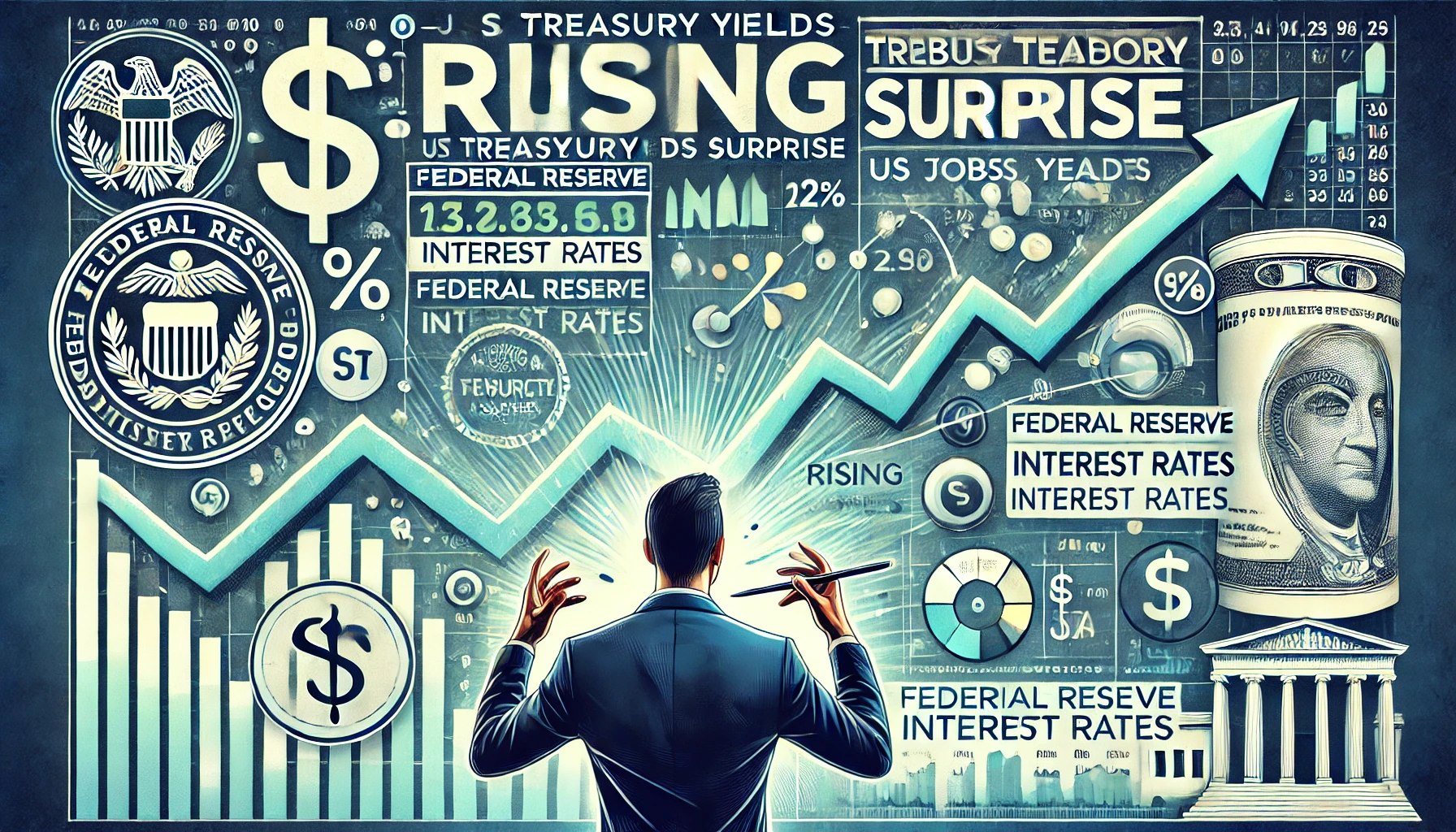Navigating the Bond Market After a Jobs Surprise: Understanding Treasury Yields and Economic Scenarios
The bond market has been buzzing with activity following the recent jobs report, which threw a wrench in the expectations of traders and economists alike. With the surprise in U.S. employment figures, bond traders are now preparing for what some are calling a “no landing” economic scenario. This means that the economy continues to expand without slowing down or slipping into a recession. As a result, the bond market has reacted swiftly, with US Treasury yields rising and traders rethinking their strategies.
In this blog, we’ll explore the key factors influencing the bond market, from the jobs report to the Federal Reserve interest rates, and how these developments are shaping bond trading strategies in light of inflation expectations, yield inversions, and the debate between a soft landing vs hard landing.
Bond Market News: How the Jobs Report Shook the Market
Bond traders were caught off guard by the U.S. jobs report, which showed much stronger-than-expected employment numbers. As the labor market continues to remain resilient, fears of an economic slowdown or recession have subsided, giving rise to a potential no landing economic scenario. This development is critical for bond traders, as employment levels have a direct impact on the bond market.
The bond market had previously anticipated a softening in the labor market, which would prompt the Federal Reserve to cut interest rates more aggressively. However, the robust jobs data has delayed these expectations, pushing US Treasury yields higher. Traders who had bet on declining yields now face losses as two-year Treasury yields have surged, leading to significant market recalibrations(The Wealth Advisor)(mint).
US Treasury Yields: A Critical Factor for Bond Traders
One of the most immediate reactions to the jobs surprise was the jump in US Treasury yields. Yields on two-year Treasury notes spiked by 36 basis points, the highest increase since 2022, as traders rushed to adjust their portfolios. Higher yields reflect the expectation that the Federal Reserve will maintain or even increase rates rather than cutting them, as many had previously anticipated.
Treasury yields are a key indicator in the bond market because they influence everything from mortgage rates to corporate borrowing costs. When US Treasury yields rise, it typically signals confidence in the economy’s growth trajectory but can also lead to higher borrowing costs, which may dampen consumer spending and corporate investment.
Bond traders closely monitor the relationship between short-term and long-term yields, especially when it comes to bond yield inversion. An inverted yield curve—where short-term yields are higher than long-term yields—can be a warning sign of an impending economic slowdown. However, with the latest jobs report and subsequent yield movements, the gap between two-year and ten-year Treasury yields has narrowed significantly, signaling less concern over an imminent recession(The Wealth Advisor).
Inflation and Bonds: Traders’ Expectations and the No Landing Scenario
The recent economic developments have reignited concerns about inflation. As the bond market responds to higher-than-expected employment levels, traders are adjusting their inflation expectations. Inflation has a direct impact on the bond market because rising prices erode the real value of fixed-income investments.
In the current environment, bond traders are wary of inflationary pressures, particularly as oil prices have surged and wage growth remains strong. The potential for renewed inflation has prompted some traders to question the effectiveness of the Federal Reserve’s interest rate hikes. While the Fed has made progress in bringing inflation closer to its 2% target, the risk of persistent inflation remains, particularly if the economy continues to expand without a significant slowdown.
The concept of a no landing economic scenario has gained traction among traders and economists alike. In this scenario, the economy continues to grow, supported by strong consumer spending and a robust labor market, without ever experiencing the deceleration typically associated with a soft landing. This poses a dilemma for the Fed, as it may need to maintain higher interest rates for longer than previously expected, which would keep pressure on the bond market(mint).
Jobs Report Impact on Bonds: Federal Reserve’s Dilemma
The strong jobs report has placed the Federal Reserve in a tricky position. On the one hand, the Fed has a dual mandate to maintain stable prices and maximize employment. The robust job market suggests that the latter is being achieved, but inflation remains a concern, especially with rising wages and commodity prices.
The Fed’s initial plan, based on slower job growth, was to reduce interest rates gradually over the next few months. However, the recent jobs data has complicated that plan, leading to speculation that the Fed may need to pause or even reverse its rate cuts. Bond traders are now pricing in fewer rate cuts over the next year, and the possibility of further rate hikes has not been ruled out(The Wealth Advisor)(mint).
As traders prepare for future rate decisions, many are rethinking their bond market strategies. The debate between a soft landing vs hard landing is now being overshadowed by the prospect of no landing at all, where the economy continues to expand despite inflationary pressures.
Curve Steepening and Other Bond Trading Strategies
Given the uncertainty surrounding the Fed’s next moves, bond traders are employing a variety of strategies to navigate the current market. One such strategy is curve steepening, where traders bet that short-term yields will rise faster than long-term yields. This strategy has become more popular as traders anticipate that the Fed will hold off on cutting rates in response to the strong labor market.
Curve steepening is a bet that the gap between short-term and long-term Treasury yields will widen. In this environment, where US Treasury yields are rising and inflation remains a concern, some traders see steepening as a way to profit from the bond market’s volatility. However, this strategy carries risks, particularly if the Fed surprises the market with unexpected rate cuts or hikes(The Wealth Advisor).
Other strategies include increasing exposure to inflation-protected securities, which offer higher returns if inflation continues to rise. Traders are also closely monitoring corporate bonds, which may offer attractive yields compared to Treasuries in the current environment.
Bond Traders Brace for a No Landing Scenario
The recent jobs report has upended expectations in the bond market, leading to rising US Treasury yields, recalibrated inflation expectations, and a reassessment of Federal Reserve interest rates. As traders navigate the uncertainty of a potential no landing economic scenario, strategies like curve steepening and inflation hedges are gaining popularity.
Whether the economy experiences a soft landing, hard landing, or no landing at all, bond traders will need to remain vigilant in monitoring key economic indicators and adjusting their portfolios accordingly. The jobs report has shown that even a single data point can have a significant impact on the bond market, and traders must be prepared to respond to both short-term fluctuations and long-term trends.
For further insights on economic scenarios and their impact on markets, visit Regent Studies for educational resources and expert analyses.
For additional reading on the latest bond market developments, you can explore more about the bond market’s response to the jobs report on Bloomberg.



